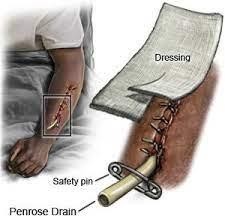The nurse understands that the rationale(s) for clients receiving intravenous (IV) therapy is/are to: (SELECT ALL THAT APPLY)
compensate for an ongoing problem affecting other fluid or electrolytes.
Increase urine specific gravity to 1.045.
move fluid into an area that is physiologically unavailable.
correct imbalance in fluid and electrolytes.
expand intravascular volume.
Correct Answer : A,D,E
Choice A rationale: Compensating for an ongoing problem affecting other fluid or electrolytes is a common rationale for IV therapy.
Choice B rationale: Increasing urine specific gravity to 1.045 is not a typical goal for IV therapy. IV therapy would decrease the urine specific gravity by diluting the urine with fluids.
Choice C rationale: Moving fluid into an area that is physiologically unavailable is not a primary goal of IV therapy. Physiologically unavailable areas are those that are separated from the rest of the body by a membrane or barrier, such as the cerebrospinal fluid, the intraocular fluid, or the pleural fluid. IV therapy does not cross these barriers and only affects the intravascular and interstitial spaces.
Choice D rationale: Correcting imbalance in fluid and electrolytes is a primary goal of IV therapy.
Choice E rationale: Expanding intravascular volume is a common goal of IV therapy, especially in cases of dehydration or hypovolemia.
Nursing Test Bank
Naxlex Comprehensive Predictor Exams
Related Questions
Correct Answer is C
Explanation
Choice A rationale: Medication concentration being half of what it was when administered is not the definition of the trough level.
Choice B rationale: Medication becoming toxic is not the definition of the trough level. Choice C rationale: Blood serum drug concentration being lowest is the correct definition of the trough level.
Choice D rationale: Highest effective drug concentration in the blood being reached is not the definition of the trough level.
Correct Answer is C
Explanation
Choice A rationale: Changing the soiled dressing carefully is important but not specifically associated with caring for a Penrose drain.
Choice B rationale: Pinning the drain to the dressing is not typically done; securing the drain and preventing tension are important.
Choice C rationale: Allowing the drain reservoir to fill completely before emptying it is a crucial nursing action associated with caring for a Penrose drain.
Choice D rationale: Maintaining the negative pressure of the drain is not applicable to a Penrose drain, which relies on gravity drainage.

Whether you are a student looking to ace your exams or a practicing nurse seeking to enhance your expertise , our nursing education contents will empower you with the confidence and competence to make a difference in the lives of patients and become a respected leader in the healthcare field.
Visit Naxlex, invest in your future and unlock endless possibilities with our unparalleled nursing education contents today
Report Wrong Answer on the Current Question
Do you disagree with the answer? If yes, what is your expected answer? Explain.
Kindly be descriptive with the issue you are facing.
